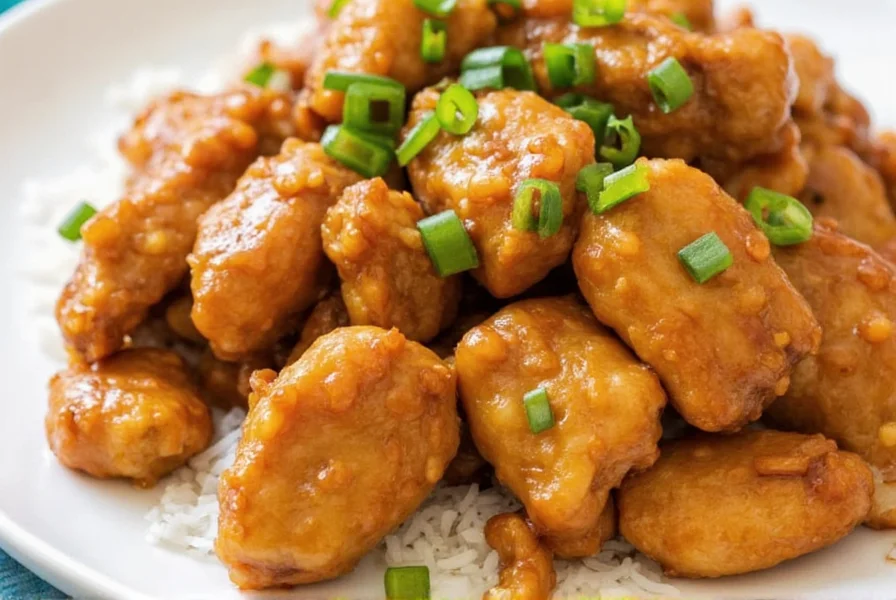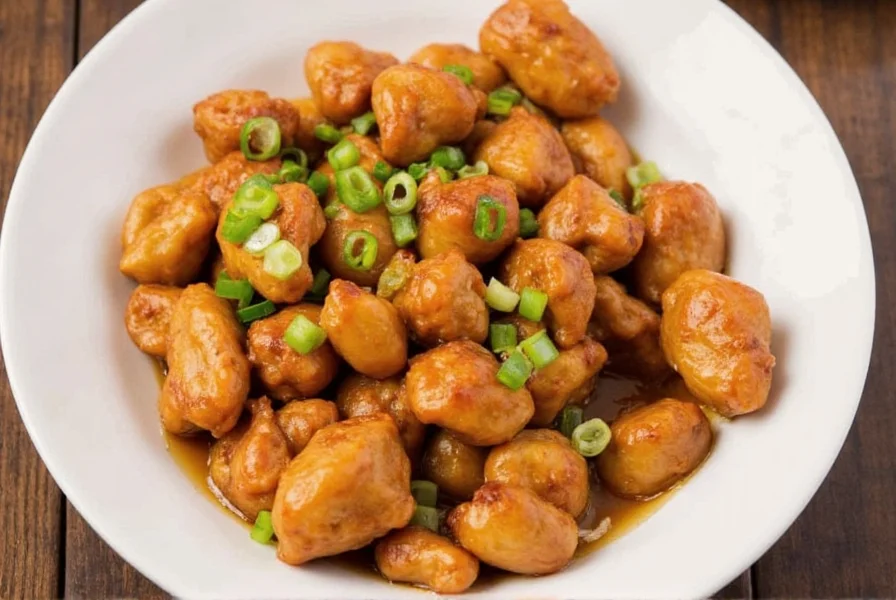Honey ginger chicken has become a beloved staple in home kitchens worldwide, bridging Eastern culinary traditions with Western palates. This dish's popularity stems from its perfect balance of sweet, savory, and aromatic flavors that satisfy diverse taste preferences while remaining surprisingly simple to prepare. Unlike many restaurant versions loaded with excessive sugar or artificial ingredients, the authentic approach focuses on quality components and proper technique.
The Origins of Honey Ginger Chicken
While often associated with Chinese-American cuisine, honey ginger chicken has roots in traditional Chinese cooking where ginger has been used for both flavor and medicinal purposes for centuries. The modern sweetened version emerged in the mid-20th century as Chinese immigrants adapted recipes to appeal to American tastes. Authentic versions maintain the therapeutic properties of ginger while creating a dish that's both comforting and sophisticated.
Essential Ingredients for Authentic Flavor
The magic of exceptional honey ginger chicken lies in ingredient quality and proper ratios. Substitutions can compromise the delicate flavor balance that makes this dish special.
| Ingredient | Why It Matters | Pro Tip |
|---|---|---|
| Fresh ginger root | Provides bright, spicy warmth that powdered ginger can't match | Use a microplane for finest texture that integrates perfectly into sauce |
| Raw honey | Maintains enzymatic properties and complex flavor profile | Add during final cooking stage to preserve beneficial compounds |
| Chicken thighs | Fat content prevents drying during high-heat cooking | Sear skin-side down first for maximum crispiness |
| Rice vinegar | Provides necessary acidity to balance sweetness | Substitute with apple cider vinegar in pinch |

Step-by-Step Preparation Guide
Mastering honey ginger chicken requires attention to timing and temperature. Follow these steps for restaurant-quality results at home:
- Marinate properly: Combine 1.5 lbs chicken pieces with 2 tbsp soy sauce, 1 tbsp rice vinegar, and 1 tsp cornstarch. Refrigerate for 30 minutes (no longer, as acid begins to break down proteins).
- Prepare sauce: Whisk together 3 tbsp honey, 2 tbsp soy sauce, 1 tbsp rice vinegar, 1 tbsp freshly grated ginger, 2 minced garlic cloves, and 1/4 cup chicken broth. The ideal ratio is 3:2:1 for sweet:salty:sour elements.
- High-heat cooking: Heat 1 tbsp oil in wok or cast-iron skillet over medium-high heat. Cook chicken in single layer without crowding (work in batches if needed) for 5-7 minutes until golden brown.
- Sauce integration: Reduce heat to medium, add sauce, and cook for 2-3 minutes until sauce thickens and coats chicken. Do not boil vigorously, which causes honey to burn.
- Finish properly: Remove from heat immediately when sauce reaches coating consistency. Overcooking turns the delicate glaze bitter.
Common Variations and Adaptations
Honey ginger chicken adapts beautifully to various dietary needs and flavor preferences while maintaining its essential character.
- Gluten-free version: Substitute tamari for soy sauce and ensure honey is pure (some commercial honeys contain wheat-based additives)
- Low-sugar adaptation: Replace half the honey with sugar-free maple-flavored syrup and add 1 tsp xanthan gum to maintain viscosity
- Korean-inspired twist: Add 1 tbsp gochujang and 1 tsp sesame oil to the sauce mixture for spicy depth
- Crispy oven version: For hands-off cooking, bake marinated chicken at 400°F for 20 minutes, then toss with sauce and broil for 2 minutes
Troubleshooting Common Problems
Even experienced cooks encounter challenges with honey ginger chicken. Here's how to solve frequent issues:
- Sauce too thin: Create a slurry with 1 tsp cornstarch and 1 tbsp cold water. Whisk into simmering sauce until desired thickness achieved.
- Bitter aftertaste: Caused by overheating honey. Next time add honey during final minute of cooking and never let sauce boil after adding honey.
- Chicken sticking to pan: Ensure proper preheating of cooking surface and adequate oil. Non-stick or well-seasoned cast iron works best.
- Overpowering ginger: Use young ginger (pale yellow, thin skin) which is milder than mature ginger (thick brown skin).
Serving Suggestions and Pairings
Honey ginger chicken shines when paired thoughtfully. The sweet-savory profile complements certain sides while clashing with others.
Excellent pairings include steamed jasmine rice (absorbs sauce beautifully), roasted broccoli with garlic, or a crisp cucumber salad with rice vinegar dressing. Avoid competing sweet elements like honey-glazed carrots that overwhelm the palate. For beverages, a dry Riesling or light oolong tea provides perfect counterbalance to the dish's richness.
Nutritional Profile and Health Benefits
Beyond its delicious flavor, honey ginger chicken offers notable nutritional advantages when prepared properly. A standard 6-ounce serving contains approximately 380 calories, 28g protein, and provides significant amounts of selenium and vitamin B6 from the chicken. The fresh ginger contributes gingerol, a compound with anti-inflammatory properties that may aid digestion. Using skinless chicken thighs reduces saturated fat content while maintaining moisture during cooking.
Frequently Asked Questions
What's the difference between honey ginger chicken and orange chicken?
Honey ginger chicken features fresh ginger as the primary flavor with balanced sweet-savory notes, while orange chicken uses citrus elements with stronger sweet and tangy profiles. Honey ginger has more aromatic warmth from ginger, whereas orange chicken emphasizes citrus acidity. The sauce bases differ significantly - honey ginger uses ginger-infused sauce while orange chicken relies on orange juice or zest.
Can I make honey ginger chicken ahead of time?
Yes, but with important caveats. Marinate the chicken up to 24 hours in advance for maximum flavor penetration. However, prepare the sauce and complete cooking immediately before serving, as the honey-based sauce deteriorates in texture and flavor when stored. If meal prepping, store components separately and combine during reheating.
Why does my honey ginger chicken sauce become grainy?
Grainy sauce typically results from overheating honey or adding cornstarch improperly. Honey crystallizes when exposed to high heat for extended periods. To prevent this, add honey during the final minute of cooking and maintain medium heat. When using cornstarch, always create a slurry with cold liquid first rather than adding dry powder directly to hot sauce.
What's the best cut of chicken for honey ginger chicken?
Boneless, skin-on chicken thighs provide the ideal balance of flavor, moisture, and cooking performance. The higher fat content prevents drying during high-heat cooking, while the skin crisps beautifully. Breast meat often becomes dry and stringy with this cooking method. For authentic texture, cut thighs into 1.5-inch pieces rather than using whole pieces.











 浙公网安备
33010002000092号
浙公网安备
33010002000092号 浙B2-20120091-4
浙B2-20120091-4